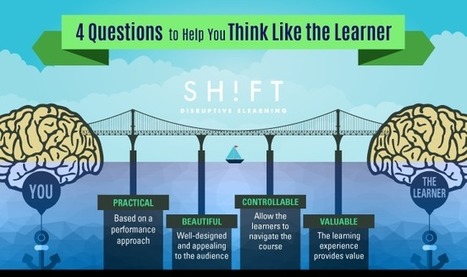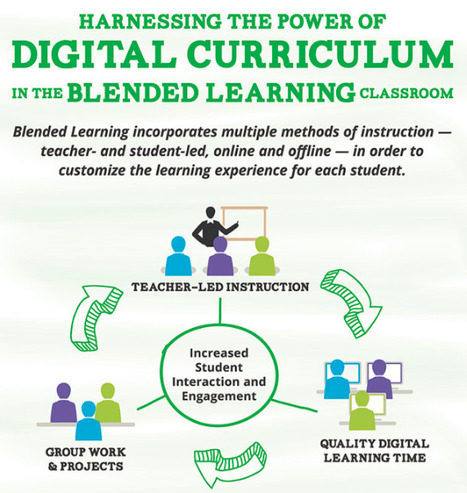Here’s a quick list of questions your learners will be asking, ask them yourself when designing your eLearning course.
Get Started for FREE
Sign up with Facebook Sign up with X
I don't have a Facebook or a X account
 Your new post is loading... Your new post is loading...
 Your new post is loading... Your new post is loading...

Nicole Wallace's curator insight,
March 19, 2014 12:57 AM
Great comments in here and how it links to neurobiology. 
Dr. Helen Teague's curator insight,
March 19, 2014 12:48 PM
strong>Referencing Beth Dichter's insight:What if we were able to design our curriculum to support the way the brain learns? Would our students be more engaged in class? Learn about this new model, Teach the Way the Brain Learns, in this post. There is a short discussion about some of the concepts as well as six brain targets, each of which includes a brief neuroscience explanation as well as a "translation" so that you will understand how to implement each target in your classroom. What are some of the targets? Brain Target 1: Establish the emotional climate for learning What does this mean? "Stress impedes learning." Make connections with students and then begin the lesson. Brain Target 2: Creating the Physical Learning Environment What does this mean? The physical space impacts our students. Changing the space may help them learn. What changes could you make in your classroom? Four additional brain targets are provided. You may also want to check out the website Brain Targeted Teaching (http://www.braintargetedteaching.org/) where you will find additional information as well as sample units that utilize this method (and a template to create your own lessons).

James J. Goldsmith's curator insight,
July 28, 2014 3:29 PM
Six practical suggestions for applying neuroscience in the classroom. |

Coolwired's curator insight,
April 16, 2014 2:31 PM
This Infographic illustrates the best of both worlds in modern education! 
Melissa Marshall's curator insight,
August 27, 2014 12:15 AM
This method of teaching harnesses both teacher expertise and flipped, student-lead learning, all enriched with technology. It is beginning to sit quite well with me as I have noticed some students still want to take notes, listen and learn from you - the expert teacher in this case is still valued! This could also be supplemented with teachers online and so on!

David Baker's curator insight,
September 29, 2013 6:48 PM
10 steps and Myths for Rigor will be a really good conversation at PIE. |














Many schools are asking teachers to consider using online learning management systems, providing students with access to course material online. Creating an online course requires teachers to learn new skills. This post from SH!FT suggests that you think like the learner when you design a course and provides four questions you should consider in this process. The four questions are below. Additional information is found in the post.
1. Why would they want to see and read through a screen?
2. Does the course look good?
3. Can they control the course and find their way around it?
4. Was the learning experience worthwhile?
Additional resources are also provided in the post.